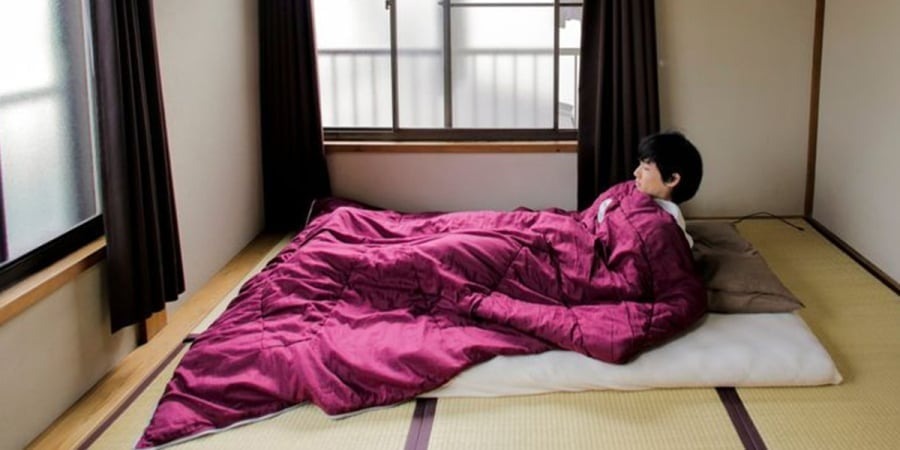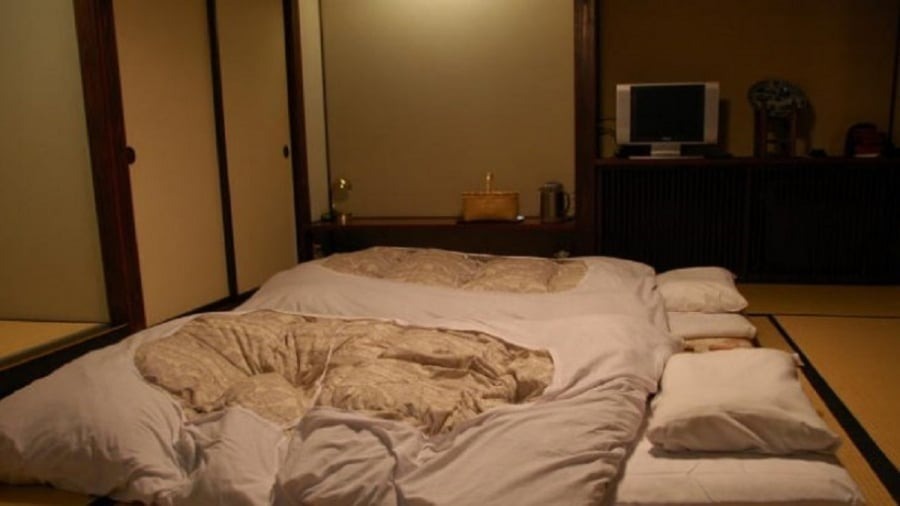Making the Most of Space
Japan is known for its high population density, especially in large cities, which has led to many families living in compact apartments. As a result, living spaces in Japan are often designed to optimize area. Thin walls or sliding doors are commonly used to divide different functional areas.
Instead of using beds, many Japanese families convert their living rooms into bedrooms by laying out tatami mats – small, versatile mats that maximize space.
Additionally, in low-ceilinged homes, using beds may cause adults to bump their heads. By sleeping directly on the floor, the Japanese save space and create a more spacious feel.

Japan’s high population density, particularly in large cities, results in many families residing in small apartments.
Ease of Earthquake Detection
Japan experiences approximately 1,500 earthquakes annually due to its proximity to the boundaries of two significant tectonic plates. Sleeping on the floor allows Japanese people to easily sense ground vibrations and react quickly during earthquakes. Additionally, minimal furniture enhances their escape in emergencies.
Financial Considerations
Another reason Japanese people opt against using beds is financial. Instead of investing in a bed, they only need to purchase mats, blankets for winter, and pillows. This not only saves on bed costs but also reduces expenses related to bed repair and customization.
Child Safety
Sleeping on floor mats eliminates the risk of children falling off beds or getting stuck in bed frames, creating a safer sleeping environment and providing parents with peace of mind.
Health Benefits
Sleeping on a hard, flat surface can help reduce back pain accumulated over time, contrary to sleeping on soft beds where the mattress may sag and cause discomfort. Sleeping on the floor maintains a straight spine, preventing the body from being forced into unnatural positions.

Sleeping on a hard, flat surface helps reduce back pain over time, unlike soft beds where the mattress may sag.
When lying on the floor, the spine is properly supported, maintaining a straight posture throughout the day. In contrast, if the spine bends to conform to a soft bed surface, it can lead to health issues, alter spinal shape, and potentially cause incorrect gait or a hunched back.
Additionally, sleeping on the floor improves blood circulation. Lying on one’s back prevents tingling and itching associated with poor blood flow. Curling up or sleeping on one’s stomach on a mattress can reduce blood flow, causing numbness and itchiness and potentially leading to cardiovascular problems.
“The Secret to Perfectly Pickled Cauliflower: A Step-by-Step Guide to Achieving Bright White, Crisp, and Support-Free Results”
Introducing the ultimate guide to achieving perfectly pickled white cauliflower – crisp, tangy, and free from unsightly discoloration. Unveil the secrets to creating a crunchy, vibrant treat that will impress and delight, with a technique so masterful it borders on art. Learn how to transform ordinary cauliflower into a mouthwatering delicacy, a true testament to your culinary prowess. Get ready to impress!
Is It Good for Family Feng Shui to Plant a Crape Myrtle Tree in Front of the House?
The Queen of the Night, the enigmatic Epiphyllum oxypetalum, is a captivating cactus with an alluring presence. With its ethereal beauty and enchanting blooms, it captivates those who encounter it. This exotic epiphyte, native to the tropical rainforests of South America, has earned its regal moniker due to the exquisite nature of its nocturnal blossoms. Under the cloak of darkness, the Queen of the Night reveals her true splendor, unfurling her delicate petals to the moonlight in a breathtaking display of nature’s magic.






































